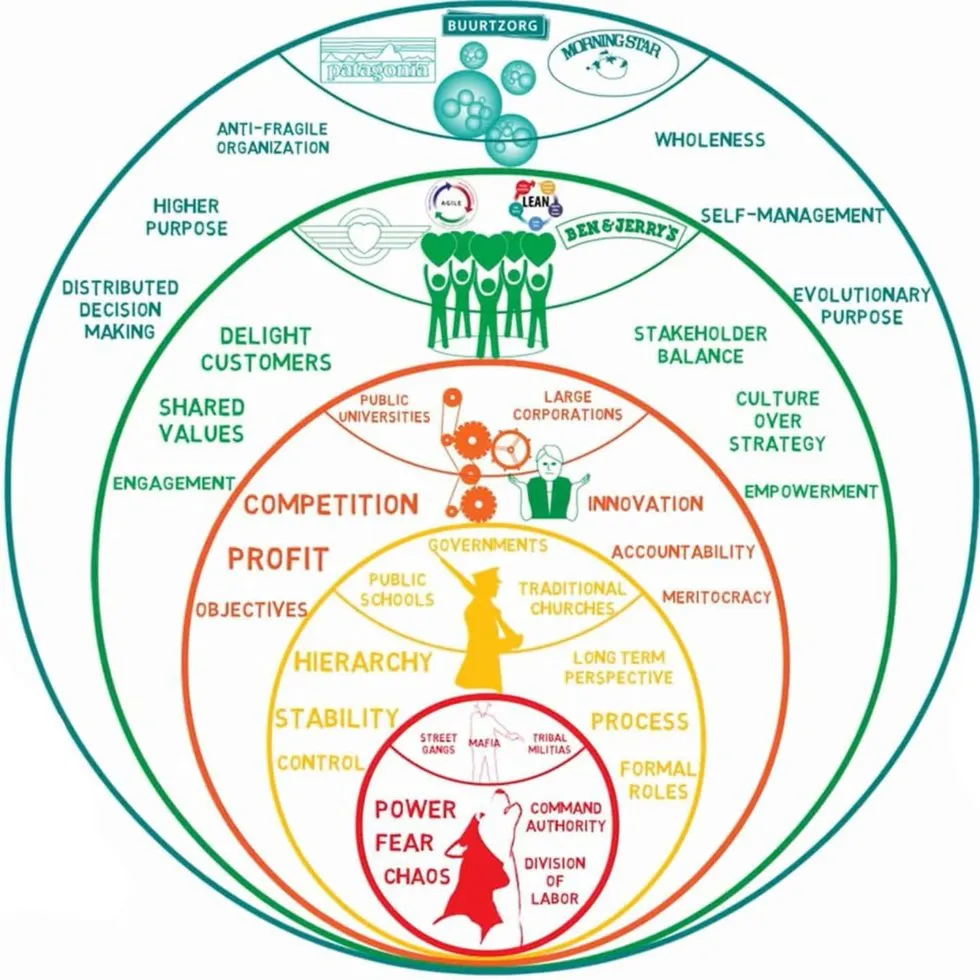Where are the good managers? — Part I
There are countless books, courses, articles, and talks out there on management theory and practice. Prices range from free to several thousand dollars, but the main information is accessible to everyone.
Why is it, then, that if you ask people, most of their experience is of bad (or even toxic) management and work culture?
In the first part of this two part series we’ll get into the theories people have in mind about organisational structures.
In Part II, we’ll look into the basics of management, some hypotheses about the reasons behind bad management and how to overcome them.
Effective Authoritarian vs. Ineffective Democratic?
Most people I’ve met believe that hierarchy is a natural phenomenon in every human (or non human) organisations. 🦞 This is also supported by research. On the other hand, many have been longing for more egalitarian, fair and wholesome structures. (These topics can also be discussed in the framework of broader political structures, but here, I’m reducing the scope to organisations under the current political system.) An interesting recent approach of the issue is Teal organisations introduced in Reinventing Organizations by Frédéric Laloux.
Illustration of Reinventing Organizations
Laloux describes different types of organisational styles in terms of colour, based on the evolution of organisations. He defines a “teal” structure as one where the management is based on worker autonomy and peer relationships. He contrasts this with older evolutionary stages of “red”, “amber”, “orange”, and “green” organisations, which are based on hierarchies, meritocracy, or consensus decisions.
The fact that beyond a certain base salary, meaningful goals and intrinsic motivation are what lead to better outcomes than coercion or monetary incentives has been shown by many. According to Laloux, the core beliefs that allow leaders/managers to truly trust their team and therefore provide autonomy and ownership are:
the belief that people are motivated to do good work, rather than believing that they are there to do the bare minimum,
the belief that, given their intrinsic motivation, they can efficiently self-organise and come up with great solutions to the company’s problems.
Believing that each and every employee will be equally passionate about the company’s mission is a big assumption. In most cases, the truth probably lies in the middle, but I don’t think that’s a problem. Perfect is the enemy of good. Not everyone has to be as passionate about the mission as the founders to do an excellent job, but they should be passionate about something related to their work. Managers need to find out what that is, how it fits the mission and current company goals, and create an environment that plays into these motivations.
I few weeks ago, I listened to an interview with author Walter Isaacson, who most recently wrote a biography of Elon Musk. He himself has been the CEO of CNN and the Aspen Institute and was the editor of Time. I found his insights on leadership very intriguing, as he compares his leadership style of kindness with that of a complete opposite of Elon Musk’s. (If you are expecting bashing or praising of Musk here, you’ll be disappointed.) Isaacson ponders whether Musk’s famous “ultra hardcore” work culture is necessary for building companies with such extreme ambitions as SpaceX, as opposed to the also successful companies Isaacson led, from a place of kindness and work-life balance, which, however, may not need to skyrocket as fast. He also admits that he needed someone in his executive team who was able to make and execute the not so kind decisions that sometimes needed to be made.
I have a feeling that, however innovative he may be, Musk might not join the pioneers who adapt teal structures anytime soon (although I may be wrong and could be surprised).
There are probably different ways for an organisation to succeed with different leadership styles. Even within an organisation, multiple organisational styles can exist in parallel or at different time frames. I think a more authoritarian style may be fitting for situations where efficiency and speed are of utmost importance, but leading from a balanced, kinder place seems to fit a more sustainable organisation or project. The truth is probably even more complex than this.
One thing is important to keep in mind, though: The leadership style you represent will attract and (self-)select different types of people, which will then define the entire team’s/company’s culture.
In Part II we’ll look into the basics of management, some hypotheses about the reasons behind bad management and how to overcome them.
Please comment and like under the original post on Medum.

